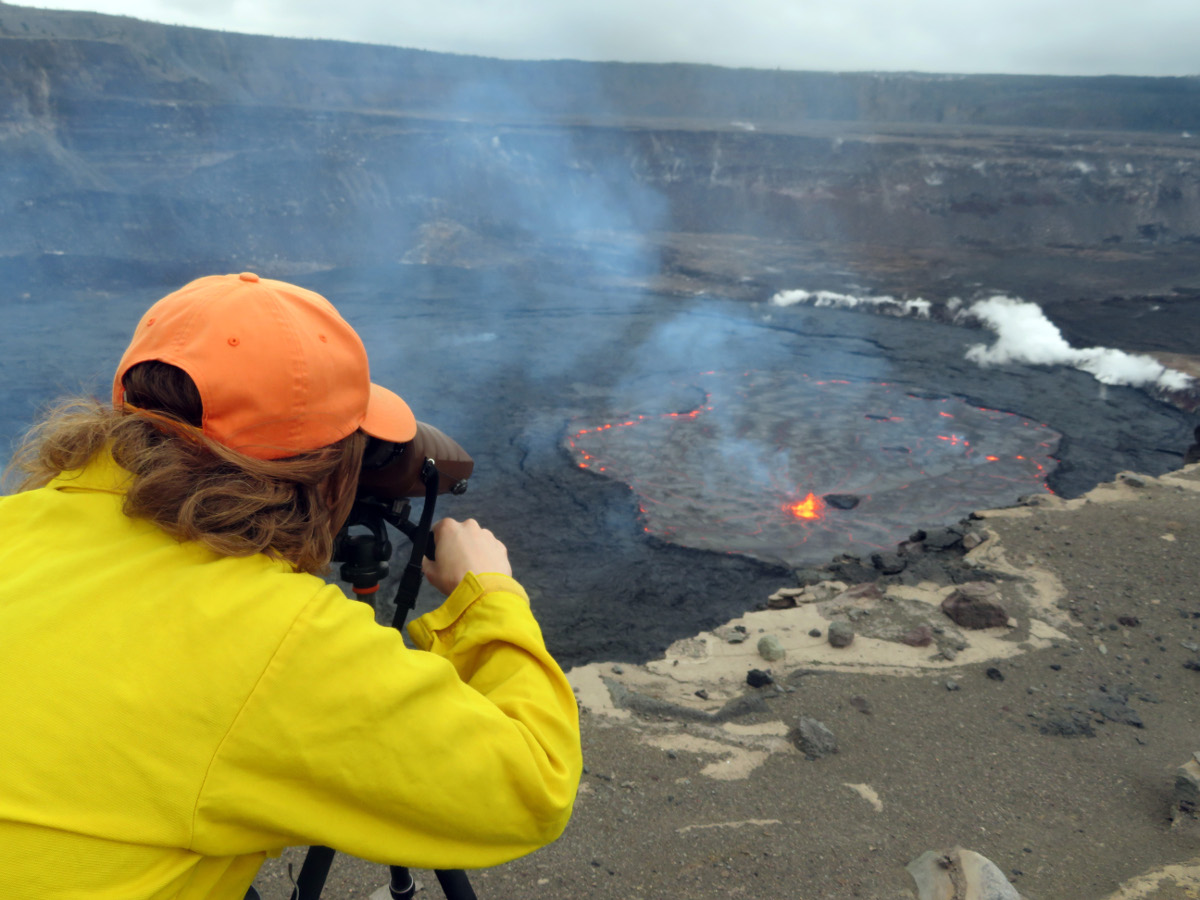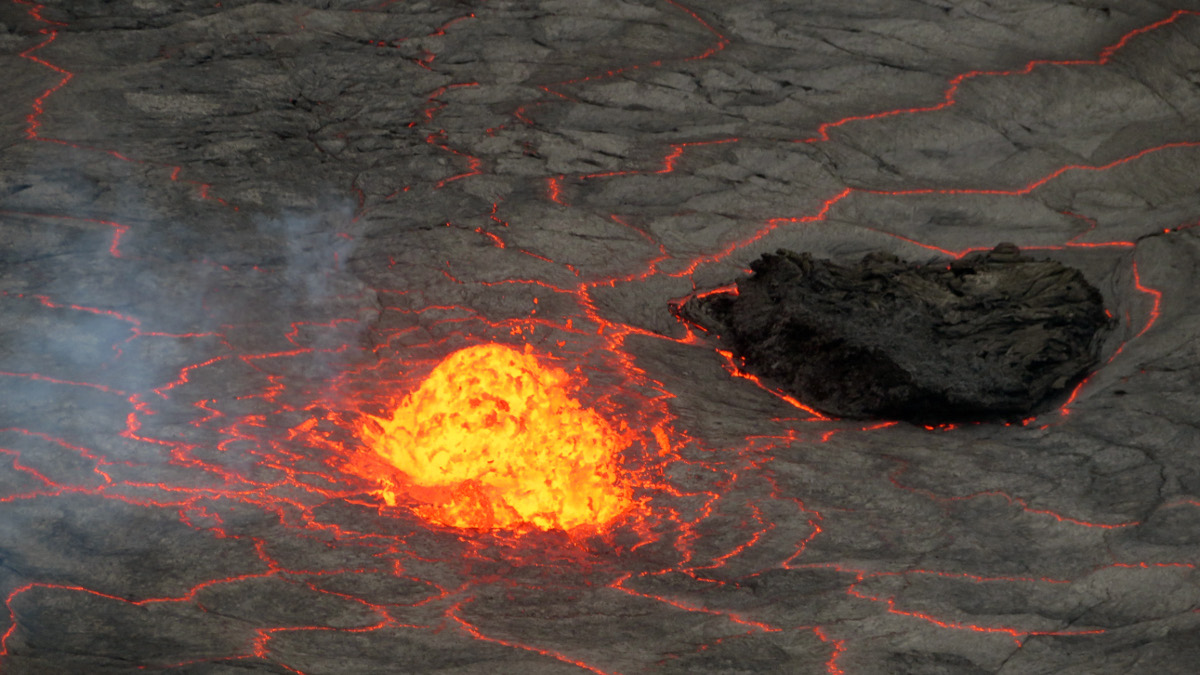
USGS: “Lava lake activity remains steady in Halema‘uma‘u, at the summit of Kīlauea. In this photo, a USGS scientist measures the elevation of the lava lake using a handheld laser rangefinder.” (USGS photo by M. Patrick)
(BIVN) – The summit eruption continues at Kīlauea Volcano, with all activity confined to Halemaʻumaʻu crater within Hawaiʻi Volcanoes National Park.
No significant changes have been observed at the summit or in either rift zone. Scientists recently captured new images of the low fountaining activity in the lava lake.
From the Monday update by the USGS Hawaiian Volcano Observatory:
 USGS Hawaiian Volcano Observatory
USGS Hawaiian Volcano Observatoryon January 30, 2023
Halemaʻumaʻu Lava Lake Observations: Eruption of lava in the eastern portion of Halemaʻumaʻu crater floor continued over the past 24 hours. Activity is concentrated in a large lava lake in the eastern half of the crater, as well as a smaller lake to the west, in the basin of the 2021–2022 lava lake. The eastern lava lake has one dominant fountain and an area of approximately 25 acres as of January 17. The lake is currently well-defined by its levee boundaries, though there are periods of frequent overflows. A live-stream video of the lava lake is available (here).
Summit Observations: Summit tiltmeters continue to show a deflationary trend. Volcanic tremor remains above background levels. A sulfur dioxide (SO2) emission rate of approximately 3,000 tonnes per day (t/d) was measured on January 20, 2023.
Rift Zone Observations: No unusual activity has been noted along the East Rift Zone or Southwest Rift Zone; steady rates of ground deformation and seismicity continue along both. Measurements from continuous gas monitoring stations downwind of Puʻuʻōʻō in the middle East Rift Zone have been below detection limits for SO2, indicating that SO2 emissions from Puʻuʻōʻō are negligible.


by Big Island Video News7:05 am
on at
STORY SUMMARY
HAWAIʻI VOLCANOES NATIONAL PARK - Scientists recently captured new photos of the low fountain in the Halemaʻumaʻu lava lake.